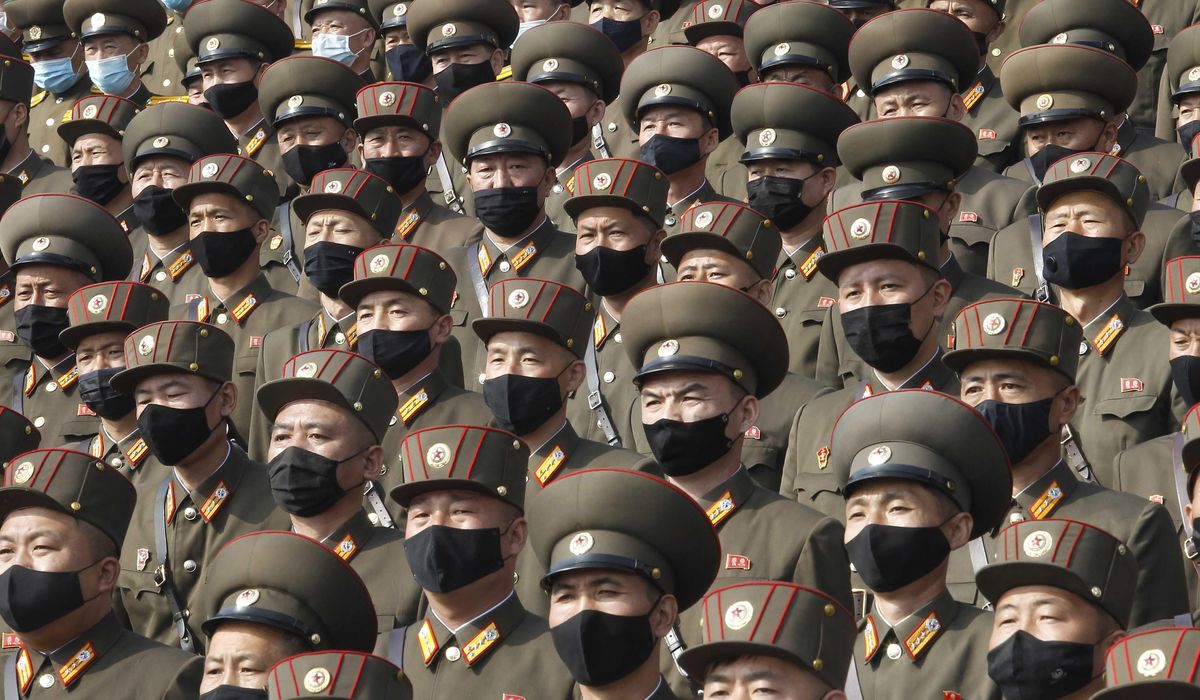


SEOUL, South Korea — With few details leaking out about North Korea’s operations in Russia’s war with Ukraine so far, some are raising questions about the massive casualties Pyongyang’s forces are allegedly suffering.
At least 300 North Korean soldiers have been killed and some 2,700 others wounded while fighting alongside Russian troops against Ukraine, South Korea’s National Intelligence Service claimed on Monday. The figures, from a closed-door briefing given by a top official and staff members of the spy agency to the National Assembly, were leaked, the Yonhap news service reported.
Monday’s figures track with estimates made over three weeks earlier by Ukrainian President Volodymyr Zelenskyy, who has sharply criticized what is the largest foreign deployment of troops by the North Korean regime since the Korean War of the early 1950s.
“According to preliminary data, the number of killed and wounded North Korean soldiers in the Kursk region already exceeds 3,000 people,” Mr. Zelenskyy said on his Telegram account Dec. 23.
Ukrainian, South Korean and U.S. comments suggest that as many as 12,000 Korean troops are heavily engaged in combat alongside Russian forces along the border with Ukraine.
Multiple videos, many shot by drones, have shown Asian troops in action in Russia’s Kursk Oblast, where Ukraine seized a small chunk of Russian territory in a surprise sortie in August that is now being heavily assaulted by Russia. While many ethnically Asian Russians serve in the Kremlin’s military, they are not assigned to exclusively Asian units.
Two wounded captives, believed to be North Korean soldiers, are currently being interrogated by Ukraine’s Security Service, aided by South Korean translators and Seoul’s National Intelligence Service.
Neither man has yet revealed his unit. The NIS, speaking in Seoul, stated that they were from the Reconnaissance General Bureau – North Korea’s military sabotage arm.
That contradicts earlier reports, that they are regular special forces from the Korean People’s Army’s 11th “Storm” Corps, which includes shock units in light infantry, airborne and marine brigades.
The high casualties incurred by the North Korean troops are due to a “lack of experience of modern warfare,” the NIS said.
But there are reasons to question to heavy toll put out by Ukraine and its allies: The North Korean casualties’ survival rates, if the NIS’s estimates are correct, are extraordinary. One military historian said the stated ratios between wounded in action and killed in action — roughly nine to one — raised doubts about the overall estimates, in a war in which both sides have tried to overstate the losses for their adversary.
“Ninety percent [wounded in action} and 10% killed in action looks like the outcome of a wonderful medevac, triage and advanced surgery hospital systems,” said Gastone Breccia, a military historian at the University of Pavia. “The Russians don’t have them to my knowledge. Do the North Koreans? Maybe, but probably not.”
Even though Mr. Breccia noted that wounded figures could also include those unfit for service for non-combat-related reasons, such as flu, pneumonia and drunkenness, the NIS ratio still raises questions.
Research from the Dupuy Institute, which analyzes military data, has assessed self-declared 2022 casualty reports from two sides in the current war — Ukraine and the Russia-allied Donetsk People’s Republic, or DPR. The institute found their wounded-to-killed ratios to be between 4.14 to 1 and 5 to 1.
“I expect [the ratio] to be more than 3-to-1,” analyst Christopher Lawrence noted in a post on the institute’s website. “This is the old World War II figure and medical care has improved since then and many people are now wearing body armor. Body armor certainly increases survivability from blast and fragmentation wounding, which is the majority of wounding on most battlefields.”
Adding to the likelihood of a higher death toll among Pyongyang troops is a practice widely noted among North Korean spies and commandos: suicide to evade capture.
According to a report Monday from Ukrainian media Ukrinform, a wounded North Korean soldier blew himself up with a grenade when facing capture by Ukrainian forces.
When it comes to casualty estimates, the issue is not just bad math; it can also be bad intention. It is common in war for one side to overstate enemy casualties — and understate their own — for propaganda purposes.
That issue became particularly notorious during the U.S. war in Vietnam. There, in a counter-insurgency fight that did not offer customary military objectives such as terrain captured, “body count” became the leading metric for success.
A 1977 study, conducted by a retired brigadier for “Human Behavior” magazine, found that 61% of 173 U.S. generals who fought in the conflict believed body counts had been “grossly exaggerated,” even though it was the “key factor in measuring results of the war.”
The U.S. Army subsequently abandoned the concept, as Gen. Norman Schwarzkopf, commander of U.S. forces in the 1991 Gulf War with Iraq, noted.
“Body count means nothing, absolutely nothing,” the general said. “And all it is is a wild guess that tends to mislead people as to what’s going on.”
“We should be very careful while handling casualty estimates from anybody involved,” added Mr. Breccia, who has published works on subjects ranging from Rome’s military to the Korean War. “But with independent sources being so scarce, we can only argue over where the truth can be.”
• Andrew Salmon can be reached at asalmon@washingtontimes.com.
